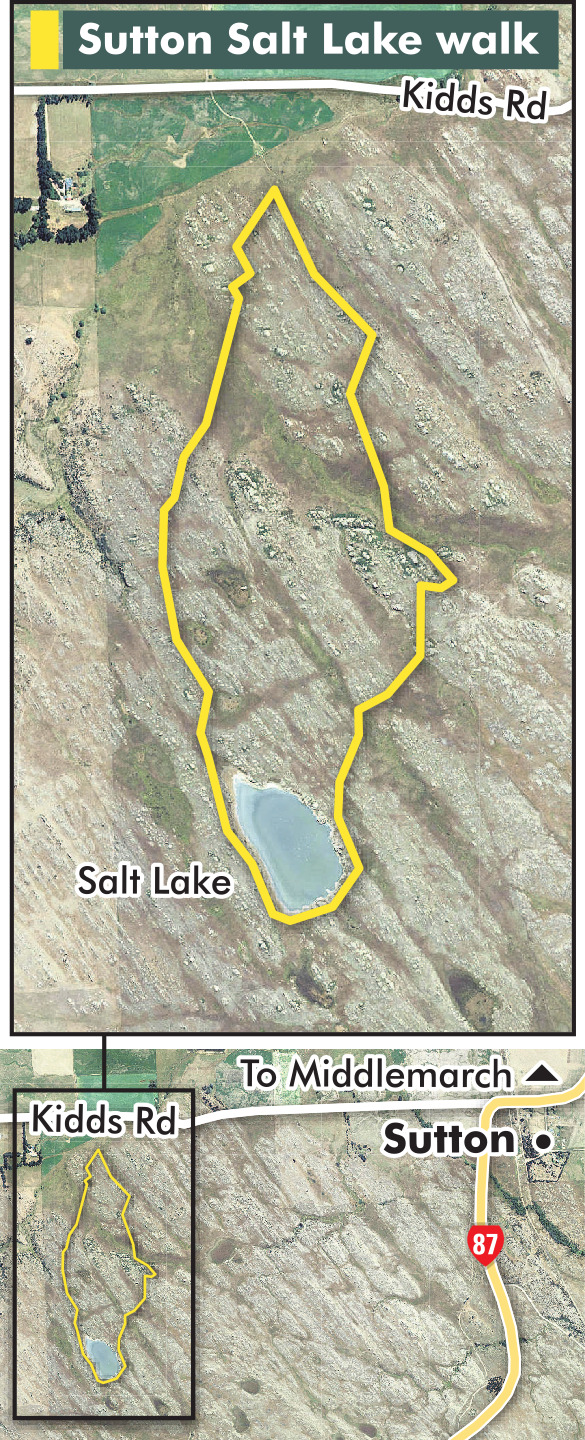
Sutton Salt Lake is high up on the Strath Taieri Plain near Middlemarch. Even though the landscape is flat for miles there is something in the air that lets you know you are high above the sea. Big skies, distant mountain ranges, landscapes reminiscent of moonscapes and high-altitude peace.
The lake sits in its own small basin, hence its existence. As rain trickles down through the surrounding schisty soils, water gathers natural salts and collects in this shallow dip.
There is not much rainfall, only half what the coast gets, but tiny particles in rainwater add to the saltiness.

Visibly salt-encrusted "high tide" marks encircle the lake. Depending on how full it is, the lake is only about half as salty as the sea. Taste and see. It is so shallow that on a hot day it is warmer than a child’s paddling pool.

The track itself is so good that a barefoot runner was giving it a go the day I visited. Lizards scuttle across the path, crickets shimmer in the distance and day-flying moths flit relaxedly around.

Later though, the ODT’s Anthony Harris informed me my travelling companion was probably a striped dung fly (Hybopygia varia) that breeds in rotting vegetation and cattle droppings. They are attracted to perspiring human skin.

- Clare Fraser












